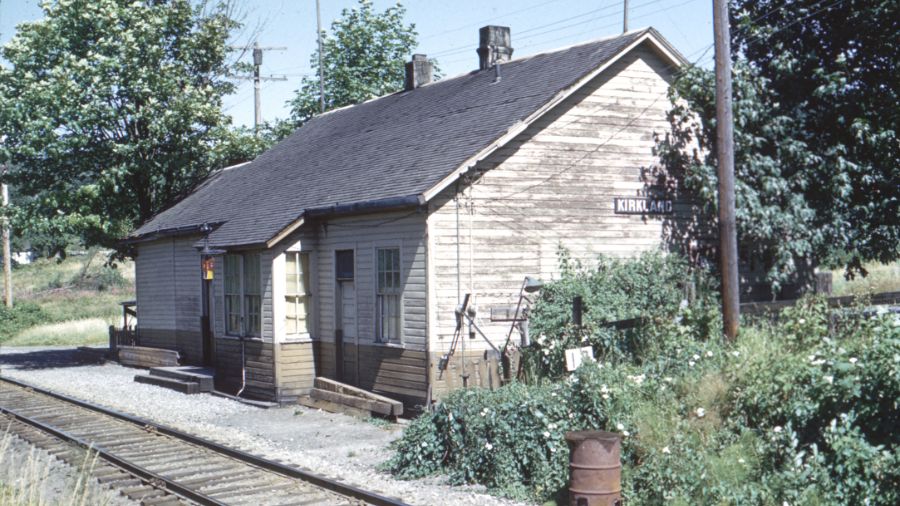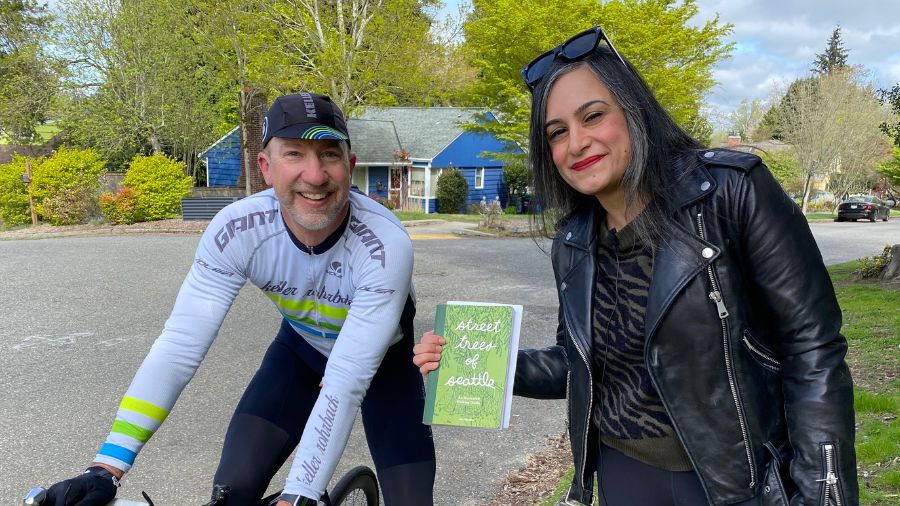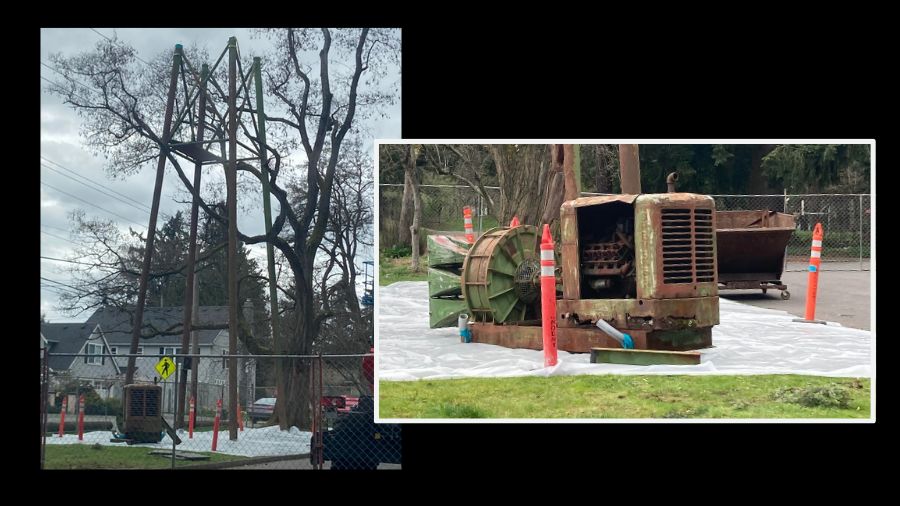Northwest has long and forgotten history of infectious disease outbreaks
Mar 18, 2020, 10:00 AM | Updated: 10:23 am

Whitman Mission, near Walla Walla, where measles sickened many settlers and killed dozens of Cayuse and other native people in the 1840s. From a drawing made by a survivor of the "Whitman Massacre" of 1847. (Washington State Archives)
(Washington State Archives)
The current coronavirus pandemic has been compared to the 1918 influenza, and we’ve all seen the pictures lately of Seattle police officers a hundred years ago wearing masks. But earlier, there was a series of now mostly forgotten outbreaks of infectious diseases in the Northwest going back to the 1700s.
An Oregon-based historian named Robert Boyd wrote a book in the 1990s for UW Press called “The Coming of the Spirit of Pestilence.” In the book, Boyd, who began researching the topic in the 1970s, documents several diseases that were inadvertently brought from Europe to the Americas, and a series of outbreaks in the Pacific Northwest from the 1770s to the 1870s.
Many Washingtonians have learned about the tragedy near Walla Walla in 1847 where Native Americans from the Cayuse tribe attacked the Whitman Mission and killed Marcus Whitman and his wife Narcissa and a dozen others, and then took nearly 50 survivors hostage for a month.
That attack along with some of the key circumstances that led up to it are a crucible for how infectious diseases decimated the Native population and culture in what’s now Washington, Oregon, Idaho, and British Columbia.
A worldwide outbreak of measles was brought by Europeans to California in the summer of 1847. Natives who had traveled there then brought the infection back to the inland Northwest. Within days of their return, measles – with skin lesions and high fever and often pneumonia – infected settlers and Natives, and ultimately killed dozens of Cayuse that autumn.
It was then spread by settlers and fur traders down the Columbia River to tribes and settlers in the Willamette Valley. Hudson’s Bay Company employees then carried the measles to Fort Nisqually on Puget Sound, and then by boat up the coast into what’s now British Columbia and even as far north as Sitka in what’s now Alaska.
Stephanie Martin is a ranger for the National Park Service at the Whitman Mission National Historical Site. She has studied the history of the impact of disease there for years.
“Almost everybody had the measles here, except maybe Marcus and Narcissa [Whitman], who we’re busy taking care of everyone,” Martin said by phone from her office a few days ago, referring to the late summer and early autumn of 1847. “But the Walla Walla people had gone to Fort Sutter … to buy cattle. They contracted the measles down there, and quite a few of them died there. And then the survivors came home and took the measles to every village.”
“So it came in from almost all directions and it spread all across this plateau region and over to the c oast,” Martin said.
Native Americans had practically no immunity to measles (though some may have been exposed around 1810, according to Robert Boyd), and so the disease was often far more fatal to them than it was to those of European descent, whose ancestors had likely faced measles outbreaks for centuries and who had thus passed down some genetic resistance.
In addition, many traditional Native remedies – such as sweat lodges and cold water baths that helped pre-contact conditions – often exacerbated symptoms and hastened death from so-called febrile diseases (those with symptoms that included high fever).
Martin says that Marcus Whitman was a physician – a 19th century physician, of course – and that in this capacity, he tried to help the ailing settlers at the Whitman Mission and the ailing Cayuse nearby. But medical knowledge was nowhere near what it is now about measles, smallpox, malaria (known as “the fever and ague” in those years) and other infectious diseases.
Stephanie Martin says that she believes Whitman’s attempts to help were sincere, and that he had a business plan to serve settlers and to keep the land safe for the Cayuse.
But not everyone shares Martin’s informed perspective.
Some of the published histories “talk about him giving medicine to people, but those are medicines like mercury and iodine,” Martin said. “And you do have tribal people that claimed that he was purposefully giving [the Cayuse] too much of those medicines in order to kill them, but Whitman valued their souls. He wanted to convert them, and I really don’t think he was thinking along those lines.”
Despite the lack of medical knowledge of even a physician in 1847, Whitman’s actions did make a difference to those suffering, Martin says.
“When he went over to help them, probably the best thing he did for them was hydration,” Martin said. “That’s what he did for the settlers here, [there’s] not much else you can do. Still to this day, [there’s] not much you can do for the measles.”
Unfortunately, in the years before the 1847 measles outbreak, one of the people who worked at the Whitman Mission — a controversial figure named William Gray who later wrote a history of the Oregon Country — had put a mild poison in melons growing in the Mission’s gardens to discourage Native kids from taking them. Mission staff had also left out poisoned meat to kill wolves, but Natives would sometimes take that meat and eat it and get sick.
Decades earlier, when smallpox and malaria were present, it was well known that American fur traders down the Columbia River and along the Washington coast had threatened Natives; the American traders were said to have held up bottles, claimed they contained disease, and said they would uncork if the Natives didn’t cooperate in the fur trade.
These scenarios established an unfortunate precedent that likely contributed to the violence that followed the 1847 measles outbreak.
“There was a history here of Europeans poisoning the Native people,” Martin said. “So it was pretty logical that when they all started dying over there a mile away, and here at the Mission only one person died, they figured they’d been poisoned. And they went to the source to stop it, and that was Whitman. So it was very logical. It just was incorrect and it backfired on them.”
The measles and the violence against the Whitmans that followed precipitated monumental changes in the Oregon Country.
“In the end, the Cayuse had to leave this area,” Martin said. “They never came back, and everybody involved with the Whitmans, they were gone. The mission was closed.”
“It just ended everything,” Martin said.
Boyd’s book points out that measles and other diseases harmed the early Northwest economy, as fur collecting by Natives, and the trading and other work of Hudson’s Bay Company employees, would often slow down or come to a halt during outbreaks.
The attack also led indirectly to creation of Oregon Territory by the United States. The region had been in limbo for decades while jointly occupied by the U.S. and the British, and that had only been settled in favor of the US by the Treaty of 1846.
In early 1848, American settlers demanded federal assistance to punish the Cayuse and to formally create Oregon Territory. Congress acted that summer.
Stephanie Martin says that of the 50 or so Cayuse living near the Whitman Mission in the autumn of 1847, perhaps as many as 30 died from the measles outbreak. This percentage, while staggering to contemplate, likely pales in comparison to the bigger picture.
“Overall totals, when they’ve looked at it from the time Columbus arrived in North and South America and through all those epidemics and all those years starting from the 1400s up to the time of the Whitman’s in the 1800s,” Martin said. “They figure it was 90% of the Native populations that were killed.”
And while Martin says some settlers in the Northwest didn’t care that Natives were dying – because it meant the land of the Oregon Country was that much easier to occupy and claim – there was really no bottle that needed to be uncorked by anyone. The spread of the measles and other disease was beyond anyone’s control.
“It was something that no Native could have prevented and no European could have prevented, either, because they were just ignorant,” Martin said. “At least [today] we’re not ignorant, and we know what steps to take to try to lessen the damage.”
KIRO Radio reached out to the Confederated Tribes of the Umatilla Indian Reservation – which includes tribal members descended from the Cayuse – but their communications director Chuck Sams, who has spoken with KIRO Radio in the past, was not available. Sams is serving as Incident Commander for the tribal response to the coronavirus outbreak in Eastern Oregon.
You can hear Feliks every Wednesday and Friday morning on Seattle’s Morning News and read more from him here. If you have a story idea, please email Feliks here.













